1.02.2022

Next Launch NROL-87 on a Falcon 9 rocket from Vandenberg AFB, CA
scheduled for:
2 Feb 22 at 20:18 GMT
2 Feb 22 at 12:18pm Pacific
2 Feb 22 at 3:18pm Eastern
Quelle: AS
+++
NRO Mission
For sixty years, the NRO has developed, acquired, launched and operated the satellites that are the foundation for America’s advantage and strength in space. Using a diversified and resilient architecture of spacecraft, NRO collects and delivers the best space-based intelligence, surveillance, and reconnaissance content on the planet. NRO data supports the National Security Agency, National Geospatial-Intelligence Agency, and other NRO mission partners to produce intelligence products for the President, Congress, national policymakers, warfighters, and civil users. The NRO’s hybrid overhead architecture designed to provide global coverage against a wide range of intelligence requirements, carry out research and development efforts, and assist emergency and disaster-relief efforts in the U.S. and around the world.
Current/Upcoming Launches
NROL-87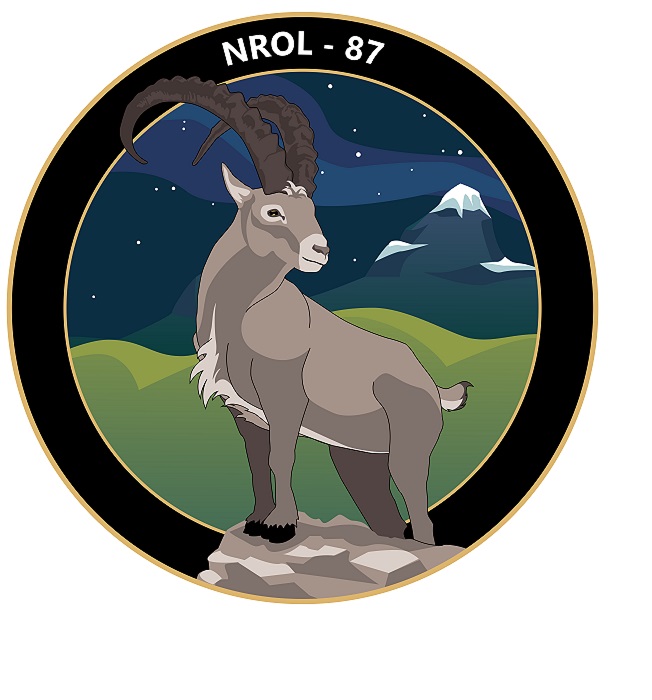
The National Reconnaissance Office (NRO) is proud to partner with SpaceX on our first National Security Space Launch aboard a Falcon 9 rocket and our first launch of 2022. The NROL-87 mission will launch from Vandenberg Space Force Base (VSFB), California, and carry a national security payload designed, built, and operated by the agency.
About the NROL-87 Patch
NRO Launch-87 logo is of a wild mountain goat standing proud atop a mountain peak remaining watchfully alert. The NRO maintains constant vigilance from above in protecting our nation and its citizens. The snow-capped mountain in the background represents our nation’s unmatched preeminence in space.
Rocket & Launch Facts
Falcon 9 is a two-stage rocket designed and manufactured by SpaceX for the reliable and safe transport of satellites and the Dragon spacecraft into orbit. This will be the 139th launch of the Falcon 9 rocket and the 20th from VSFB.
Fairing
Made of a carbon composite material, the fairing protects satellites on their way to orbit. The fairing is jettisoned approximately 3 minutes into flight, and SpaceX continues to recover fairings for reuse on future missions.
First Stage
Falcon 9’s first stage incorporates nine Merlin engines and aluminum-lithium alloy tanks containing liquid oxygen and rocketgrade kerosene (RP-1) propellant, generating more than 1.7 million pounds of thrust at sea level.
After separation, the fist stage will return to Landing Zone 4.
Interstage
The interstage is a composite structure that connects the first and second stages, and houses the pneumatic pushers that allow the first and second stage to separate during flight. Grid fins: Falcon 9 is equipped with four hypersonic grid fins positioned at the base of the interstage. They orient the rocket during reentry by moving the center of pressure.
Second Stage
Powered by a single Merlin Vacuum Engine, the second stage delivers Falcon 9’s payload to the desired orbit. The engine ignites a few seconds after stage separation, and can be restarted several times to place multiple payloads into different orbits.
Quelle: NRO
+++
SpaceX Rocket Launch to Include First-Stage Landing at Vandenberg SFB
Central Coast residents may hear sonic booms as Falcon rocket returns after liftoff Wednesday afternoon
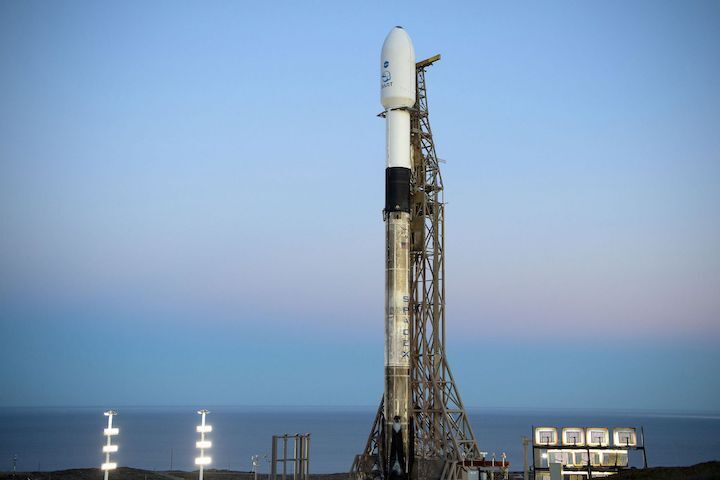
A SpaceX Falcon 9 rocket like this one used for a NASA mission last year at Vandenberg Space Force Base will carry a National Reconnaissance Office payload during a launch set for Wednesday afternoon. (NASA photo)
A Falcon 9 rocket and its cargo for the nation's spy-satellite agency will usher in a new launch year at Vandenberg Space Force Base on Wednesday afternoon.
The Space Exploration Technologies Falcon rocket will aim for liftoff at 12:18 p.m. from Space Launch Complex-4 on South Base.
Liftoff won’t occur any later than 1:38 p.m. based on a time frame released earlier. However, other sources say the opportunity ends at 12:33 p.m.
The rocket will place a payload in space for the National Reconnaissance Office, which provides overhead intelligence, surveillance, and reconnaissance to a variety of government users.
NRO typically remains mum about the mission of its spacecraft, calling it a national-security payload.
Once its chore is done, the spent first-stage booster will return to Vandenberg to touch down on Landing Zone 4, just west of the liftoff site.
After most recent Vandenberg launches, the Falcon first-stage boosters have landed on a drone ship parked in the Pacific Ocean hundreds of miles south of the base.
A return to Vandenberg means residents in Santa Barbara, San Luis Obispo and Ventura counties likely will hear sonic booms as the vehicle breaks the sound barrier en route to landing.
Sonic booms, associated with the shock waves from an aircraft or launch vehicle traveling faster than the speed of sound, may be similar to an explosion or a clap of thunder, Vandenberg officials said.
The sound heard at various Central Coast locations will depend on weather conditions and other factors.
SpaceX recycles the first-stage booster to reduce costs and the time between missions. This will be the first landing back on Vandenberg since Nov. 21, 2020.
While access to Vandenberg is restricted, the launch and landing should be visible around the Lompoc Valley and the rest of the Central Coast as the rocket rises, assuming the marine layer cooperates.
Locations around the Lompoc Valley also offer views of the launch site, which is visible when looking south of Ocean Avenue (Highway 246).
Popular viewing sites include along Ocean and Central avenues west of Lompoc, the peak of Harris Grade Road, and near the intersection of Moonglow and Stardust roads in Vandenberg Village.
Vandenberg officials said COVID-19 protocols means the Hawk’s Nest viewing site on Azalea Lane off Highway 1 will not be open.
A liftoff Wednesday would be the fourth Falcon rocket launch since mid-September from Vandenberg.
While this will be the first Falcon of 2022 from the West Coast, the firm has conduced three launches from Florida since the first of the year.
Vandenberg’s launch could be the third in three days for SpaxeX, with one occurring Monday and another Tuesday in Florida.
Quelle: Noozhawk
----
Update: 2.02.2022
,
SpaceX set to launch top secret spy payload from California
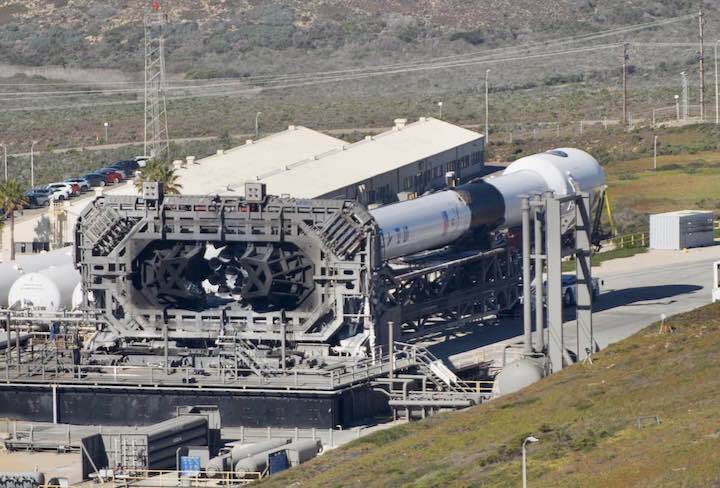
A classified payload for the National Reconnaissance Office is closed up in the nose cone of a SpaceX Falcon 9 rocket for liftoff Wednesday from California’s Central Coast, debuting a brand new booster that will land back near the launch site for reuse on another national security mission later this year.
Liftoff of the 229-foot-tall (70-meter) set for 12:18 p.m. PST (3:18 p.m. EST; 2018 GMT) from Space Launch Complex 4-East at Vandenberg Space Force Base, marking SpaceX’s fifth launch of the year.
The mission for the U.S. government’s spy satellite agency will aim to place its payload into a north-south polar orbit about 318 miles (512 kilometers) above Earth. But little more is publicly known about the spacecraft set to ride SpaceX’s Falcon 9 rocket into orbit from Vandenberg.
“I cannot provide, unfortunately, really any details whatsoever (publicly), which is really frustrating to me in one regard because then I’m not able to accurately communicate the kind of capability this is going to deliver on orbit,” said Col. Chad Davis, director of the NRO’s office of space launch.
Generally, Davis said, the NRO puts “capabilities on orbit to save lives.”
“It’s our U.S. and allied forces in the field that are using these kind of capabilities in a daily basis,” Davis said. “So support the fight on the ground, as it were, bring them home safe, and deliver our national policymakers the most detailed information that’s possible so they can make smart decisions. It’s that kind of a capability set that this mission is going to fall into.”
The NRO manages a fleet of intelligence-gathering satellites, capturing super-sharp optical and radar imagery around the world. The agency also has spacecraft tracking foreign naval deployments, eavesdropping on communications by adversaries, and relaying surveillance images between spy satellites and intelligence analysts on the ground.
The mission set for launch this week is codenamed NROL-87. It’s the third SpaceX mission for the NRO, and the first NRO mission booked with SpaceX through the U.S. Space Force’s National Security Space Launch program, which oversees launch services for the military’s most expensive and most critical satellites.
The NRO booked two previous missions on Falcon 9 rockets that launched from Florida in 2017 and 2020 through lower-cost commercial contract arrangements, eschewing the close oversight of the military.
The NROL-87 mission returns to the established formula for the NRO’s numerous missions that have flown on United Launch Alliance Atlas and Delta rockets.
But there’s a key difference with the Falcon 9 launch from California this week. Unlike the expendable, single-use Atlas and Delta rockets, the Falcon 9 is powered by a reusable first stage booster.
The Falcon 9’s first stage will return to Vandenberg’s Landing Zone 4, located just west of the SpaceX launch pad, for a vertical landing about eight minutes after takeoff. Local residents will hear double sonic booms as the nearly 16-story rocket returns for landing.
The second stage of the Falcon 9 rocket will power the NROL-87 payload into orbit. The launcher’s payload shroud will jettison a few minutes into the mission, and a SpaceX recovery team downrange in the Pacific Ocean will pluck the fairing halves from the sea after they descend under parachutes.
The booster flying the NROL-87 mission, designated B1071 in SpaceX’s fleet, is fresh from the factory, and is set to launch on its first trip to space. The first stage will be reused on another NRO mission later this year, according to an NRO spokesperson.
SpaceX and ULA won National Security Space Launch Phase 2 contracts awarded by the U.S. Space Force in 2020, ending a long-running competition for deals to launch the military’s most critical and expensive space missions, beating out proposals from Northrop Grumman and Blue Origin.
The Space Force will order Phase 2 missions from ULA and SpaceX through late 2024 for launches that could occur though late 2027.
ULA, a 50-50 joint venture formed in 2006 by Boeing and Lockheed Martin, will get 60 percent of the National Security Space Launch contracts for missions that time period. SpaceX will receive 40 percent.
The NROL-87 mission was awarded to SpaceX in 2019, before the Space Force announced the Phase 2 contracts.
Procurement documents released before SpaceX’s selection as the launch provider indicated the NROL-87 mission would deploy its cargo into an orbit about 318 miles above Earth, with an inclination of 97.4 degrees to the equator.
The orbital parameters suggest the payload may be part of a new generation of optical NRO surveillance satellites. Davis, head of the NRO’s launch program, confirmed in a pre-launch media telecon that the NROL-87 mission will carry a “single payload” into orbit.
The Falcon 9 rocket will have enough reserved propellant to return to Vandenberg for landing, indicating that the NRO payload is relatively lightweight.
As launch schedules currently stand, Davis said the NRO has seven launches planned in an eight-month period, beginning with the NROL-87 mission this week.
“We’re looking at something like a half dozen for the calendar year, deploying 12 payloads,” Davis said. “If I take snapshot today, that number is seven launches in eight months, as it sits today, from three different continents.”
Davis didn’t specify mission numbers or launch providers for the remaining NRO launches this year, but two of the remaining six missions are believed to be part of the National Security Space Launch program — the NROL-85 launch on another SpaceX Falcon 9 rocket, and the NROL-91 mission on a ULA Delta 4-Heavy rocket.
Last year, the NRO said it had reserved two missions for launch on Rocket Lab Electron launch vehicles from New Zealand. Those two launches — NROL-162 and NROL-199 — likely account for two more missions later this year.
Davis also didn’t identify the third continent that will host an NRO mission in 2022. One possibility might be a planned launch by Virgin Orbit, a U.S.-based company, of its small air-launched rocket off the coast of England this summer.
The launch of the NROL-87 mission from Vandenberg, located on the Pacific coastline between Los Angeles and San Francisco, comes amid a busy stretch of missions on SpaceX’s schedule.
SpaceX launched a Falcon 9 rocket from Cape Canaveral Space Force Station on Monday evening with an Italian radar remote sensing satellite. Another Falcon 9 rocket loaded with a group of Starlink internet satellites is standing on pad 39A at NASA’s Kennedy Space Center for a launch opportunity at 4:51 p.m. EST (2151 GMT) Wednesday, just 93 minutes after SpaceX plans to launch from Vandenberg.
Quelle: SN
+++
Start von SpaceX Falcon-9 mit NROL-87 Mission
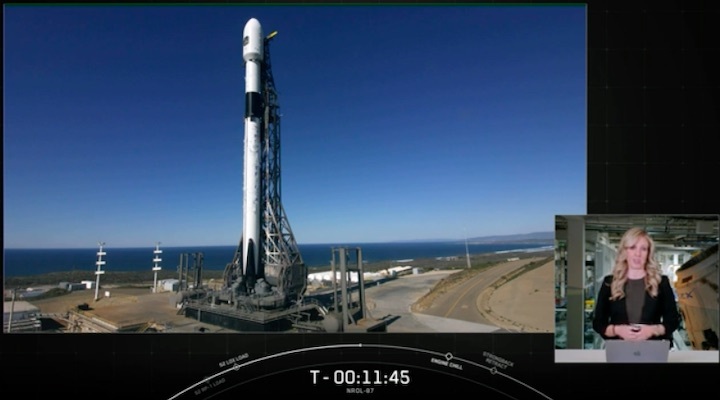
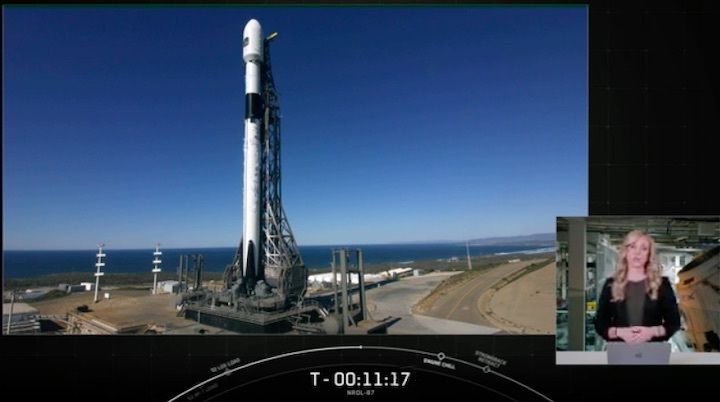

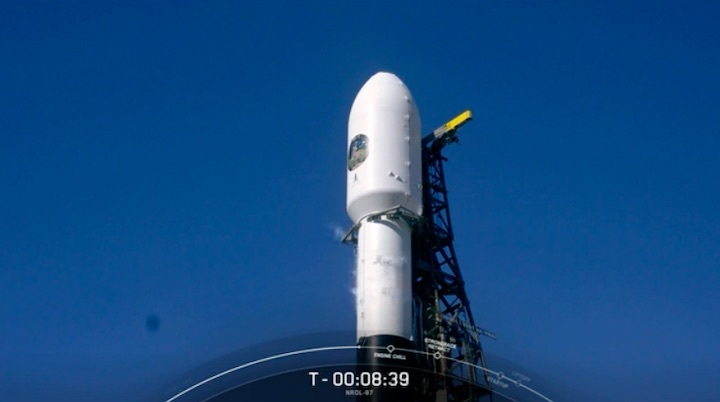
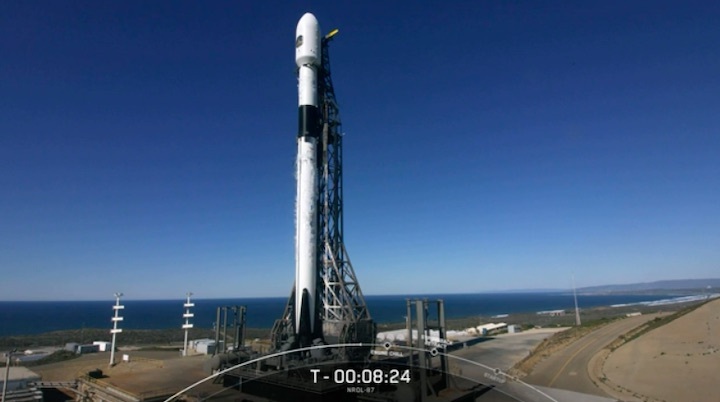
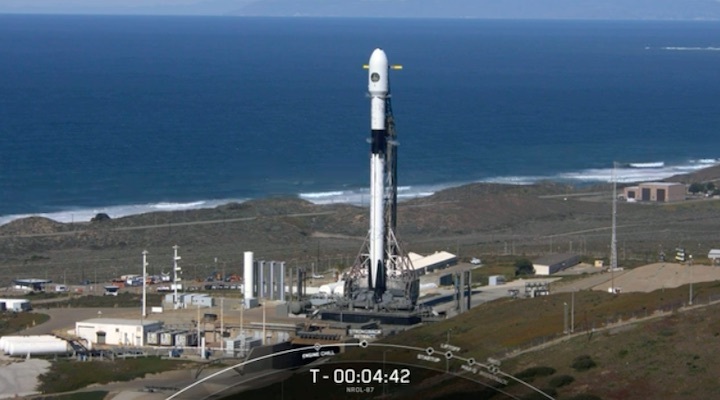
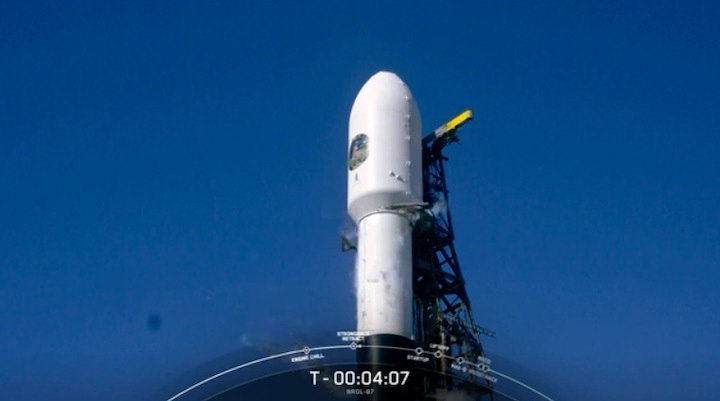
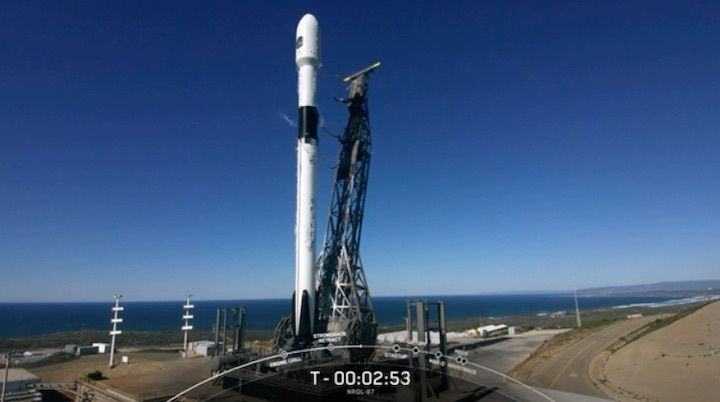
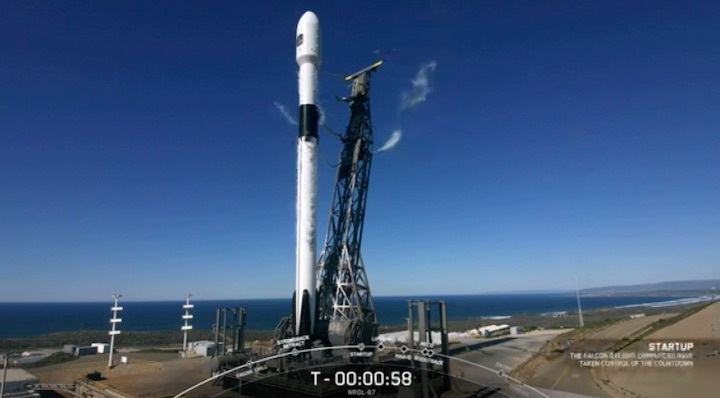
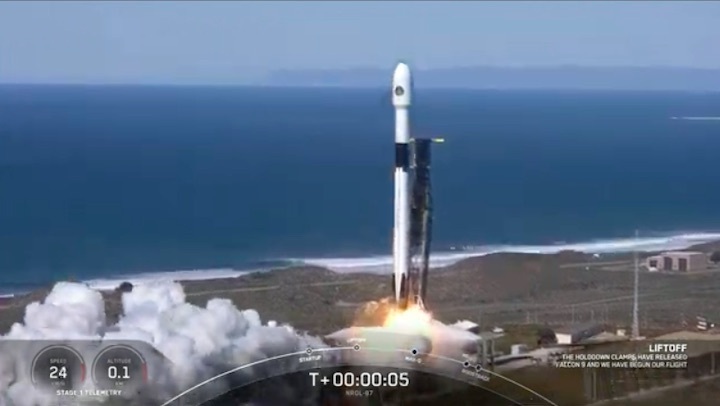
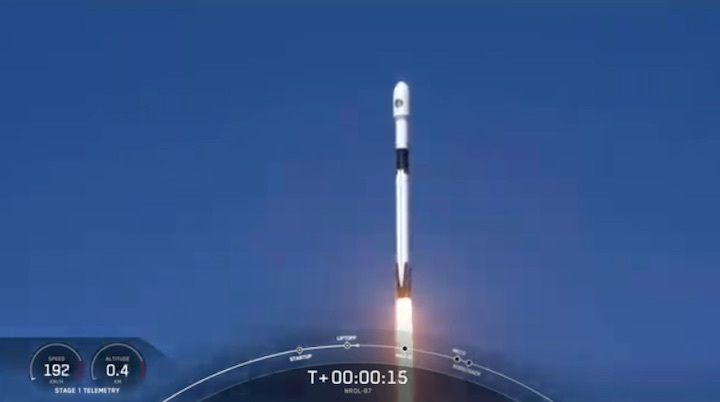
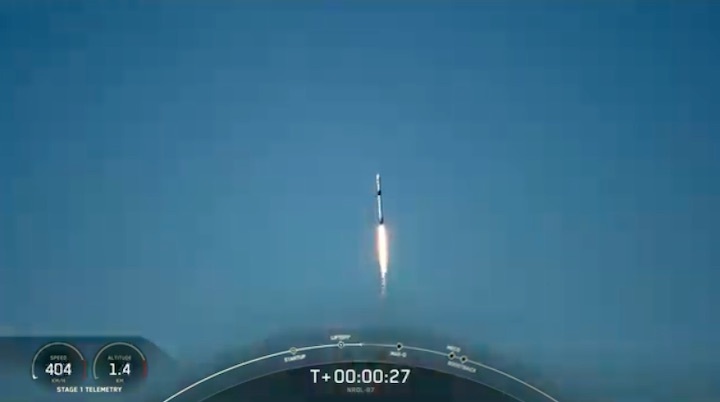
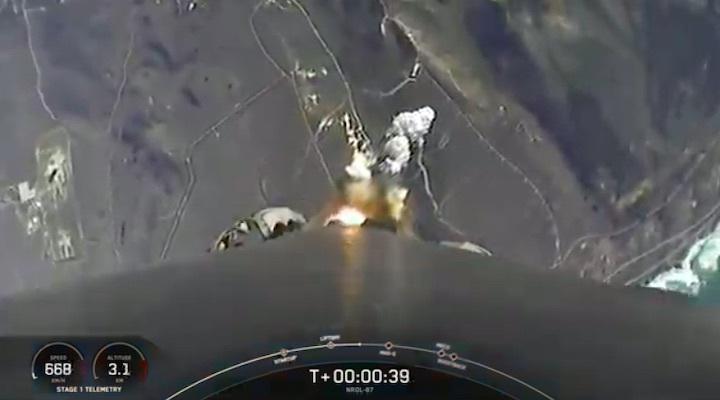
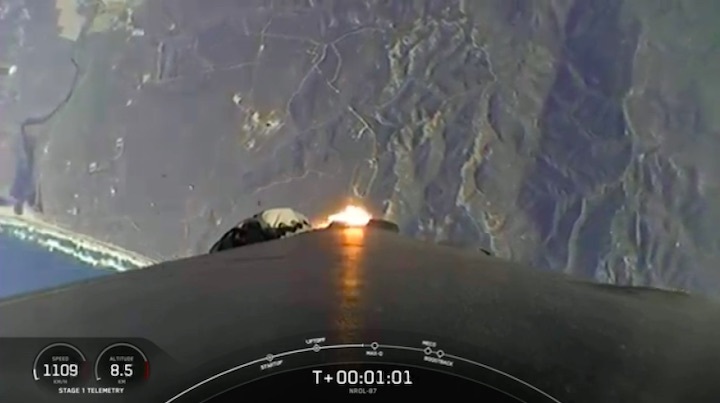
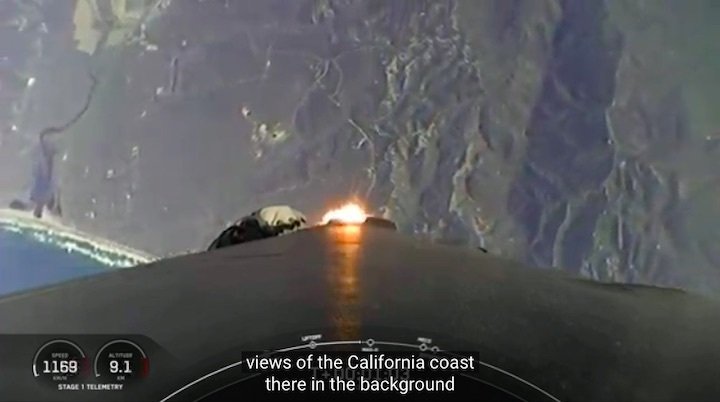
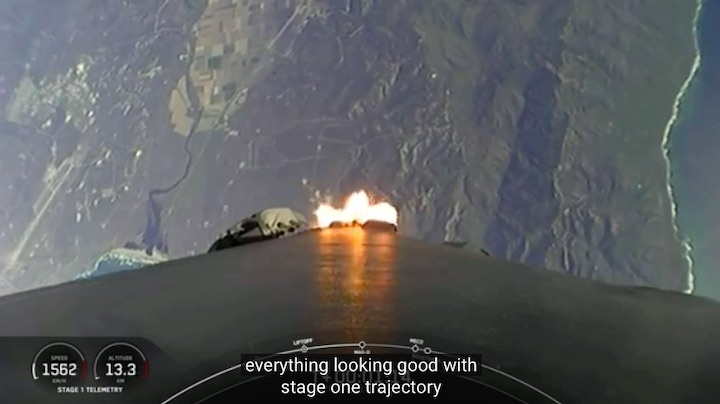
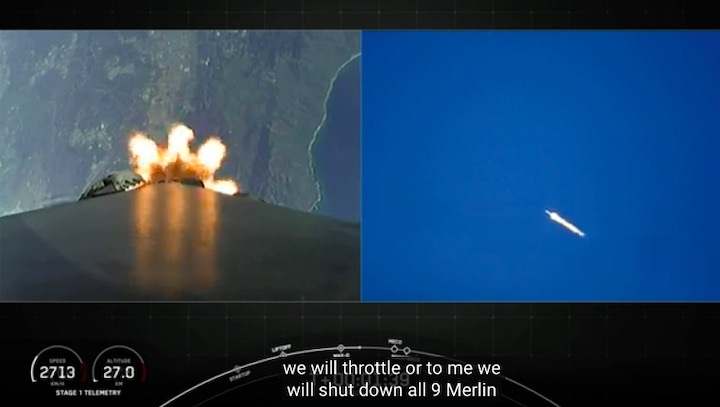
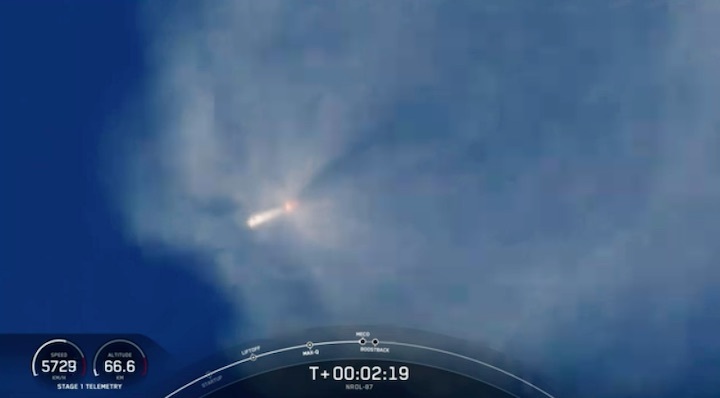
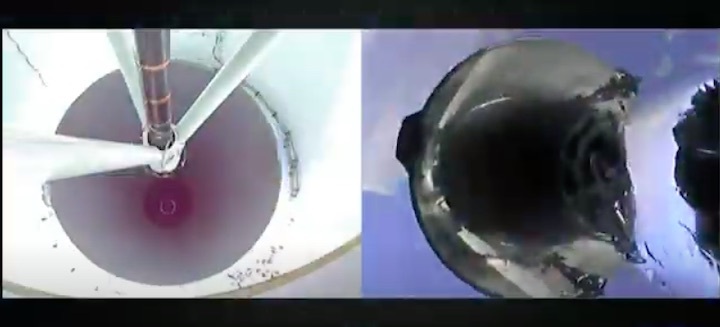
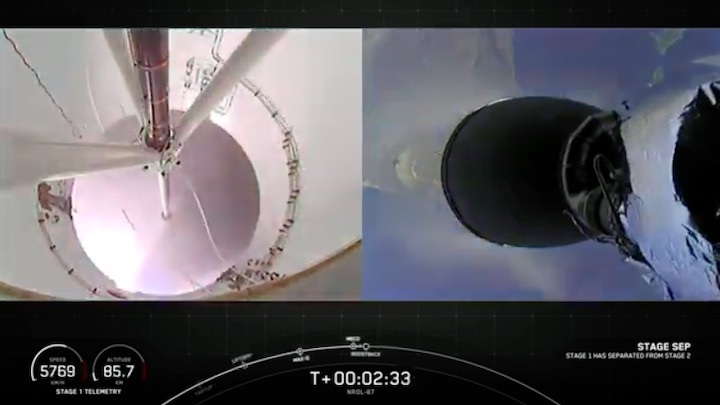
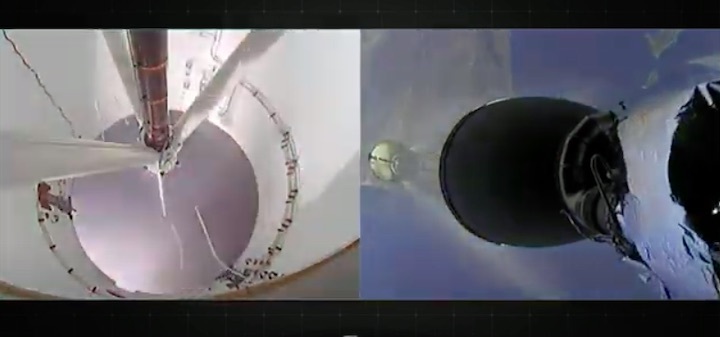
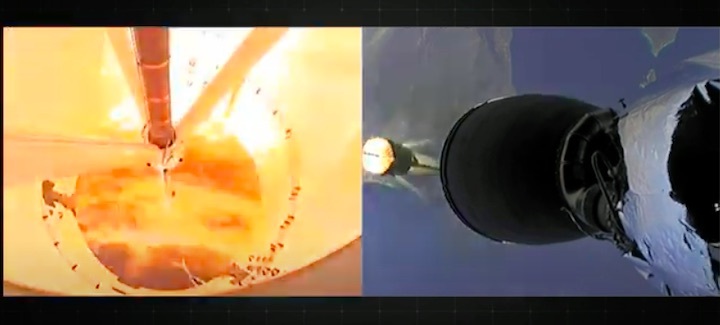
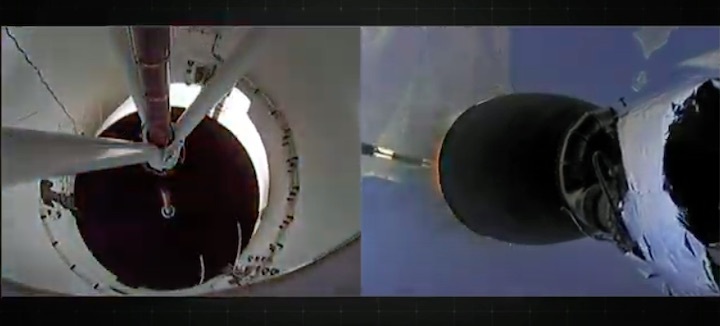

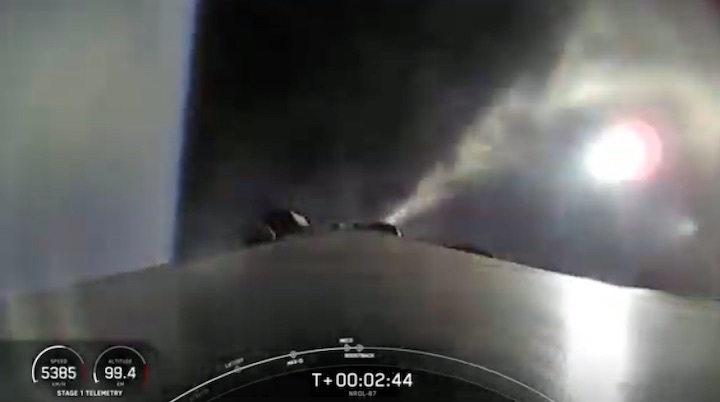
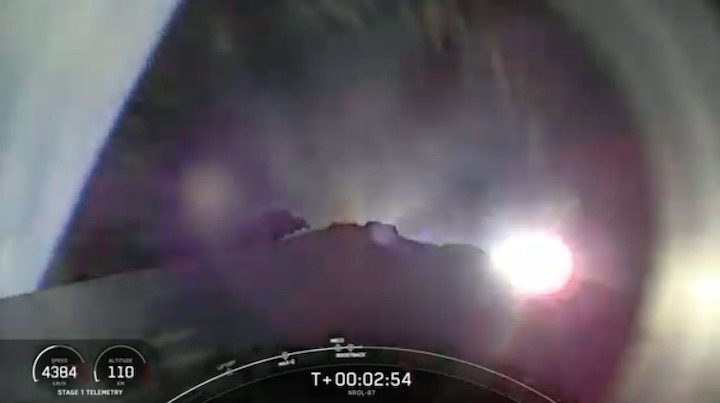
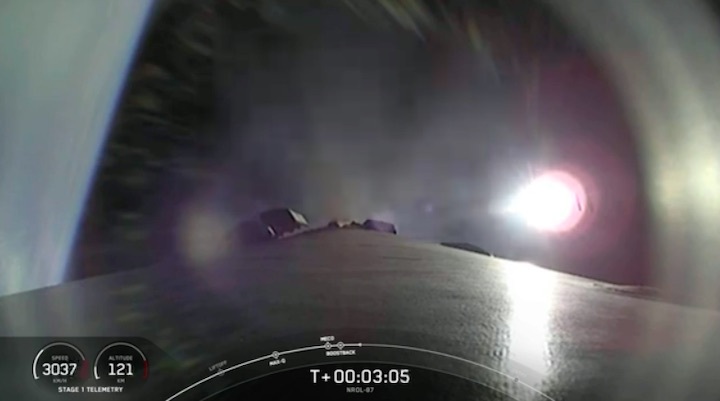
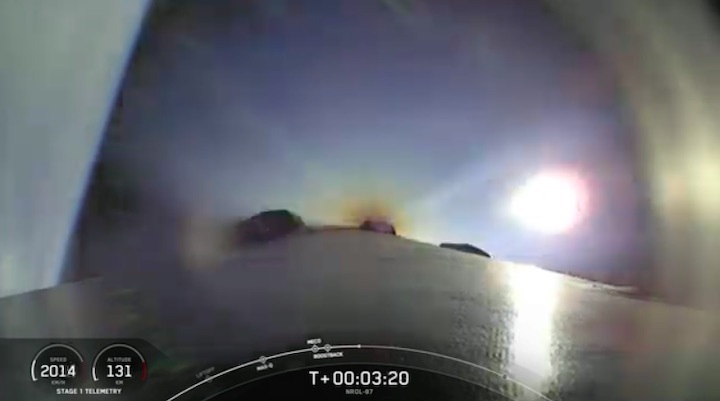
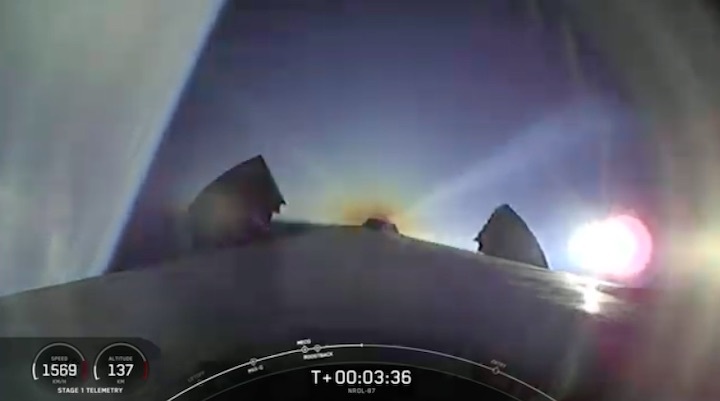
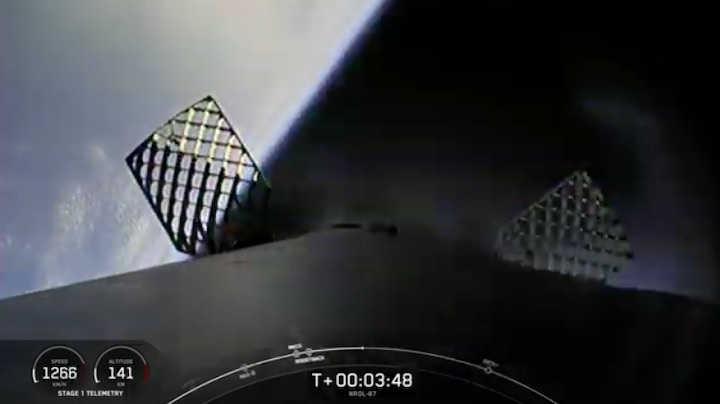
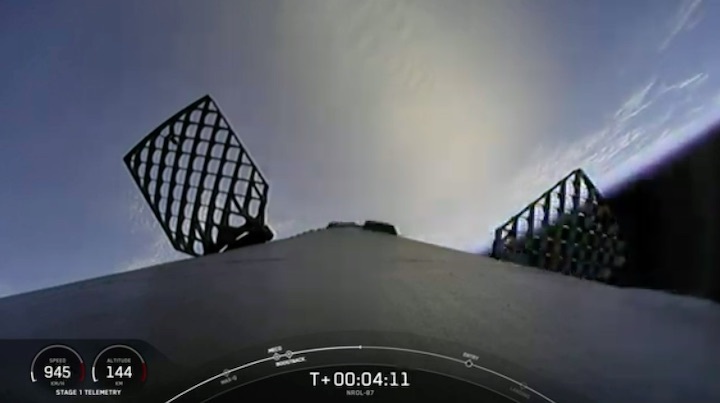
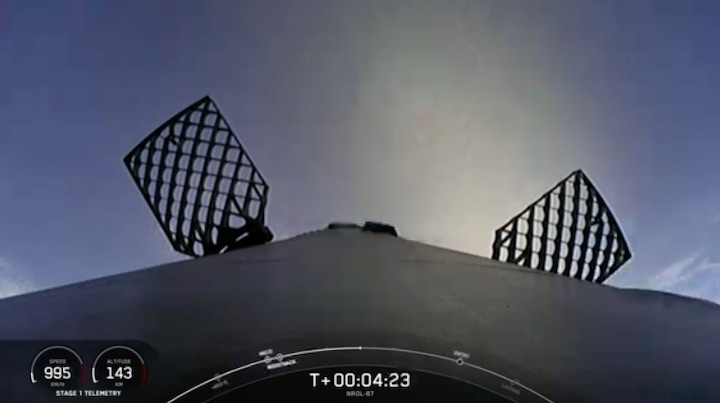
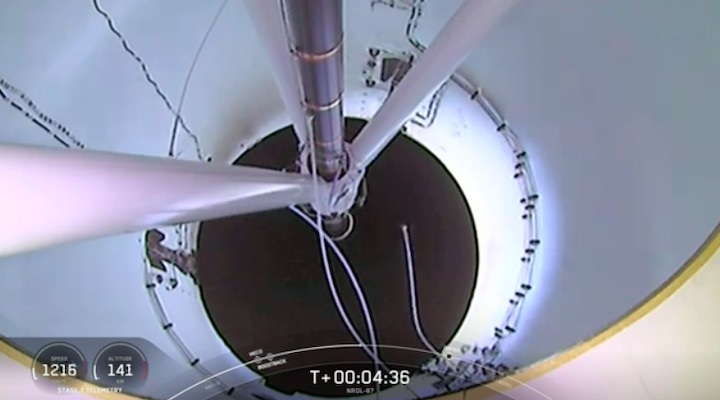
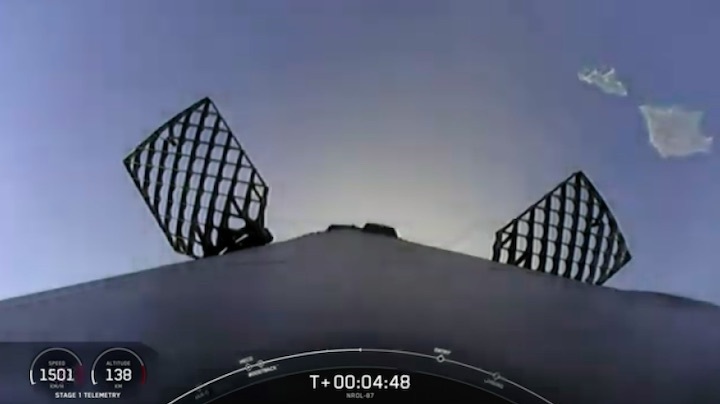
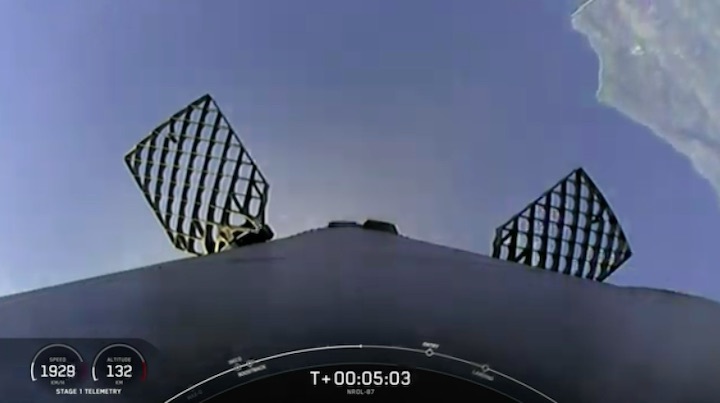
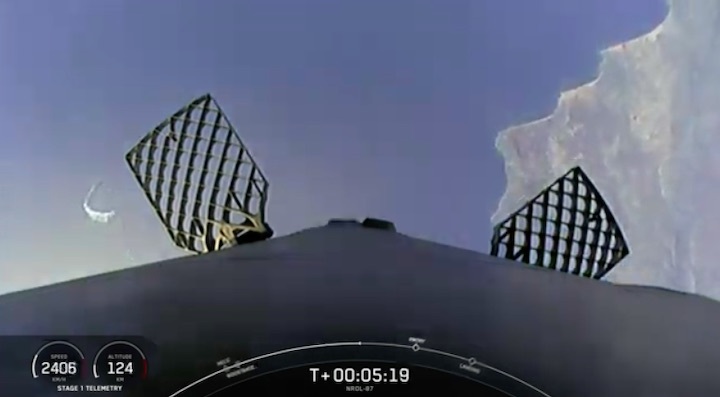

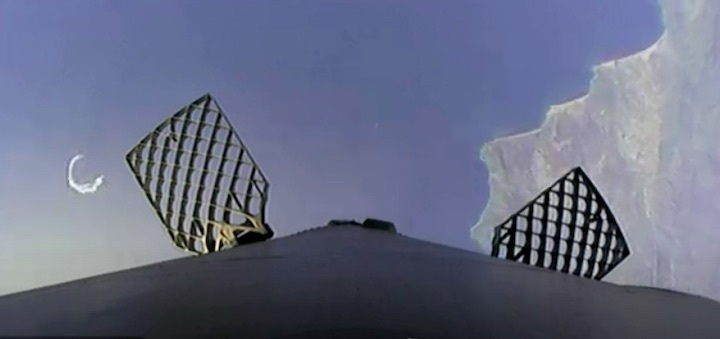
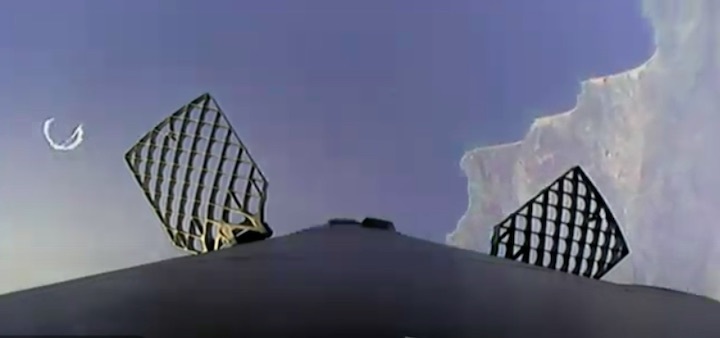
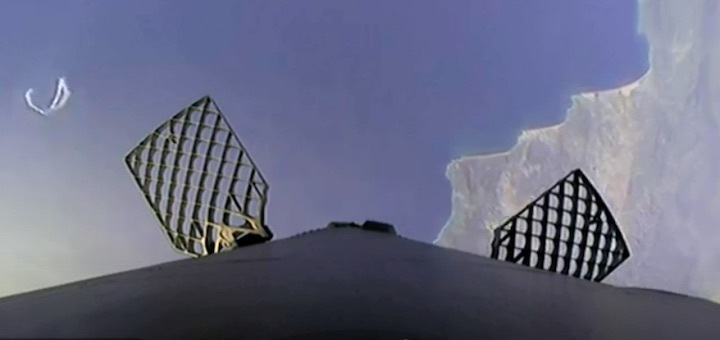

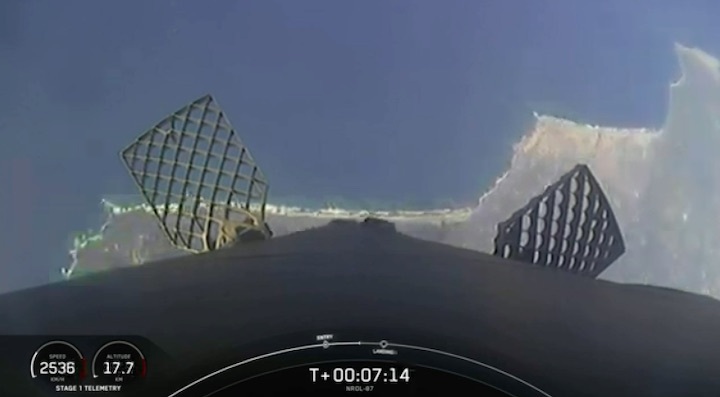
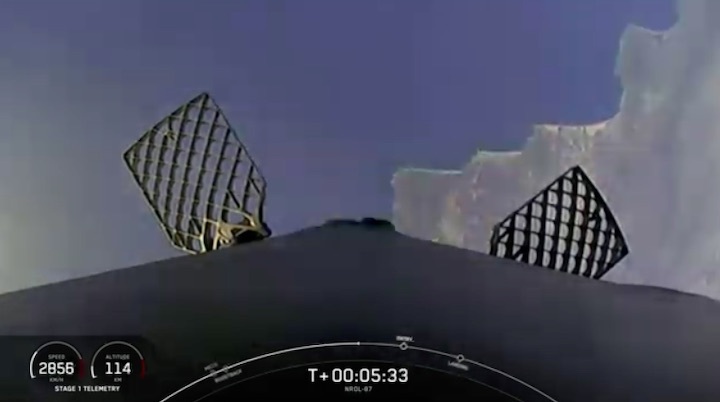
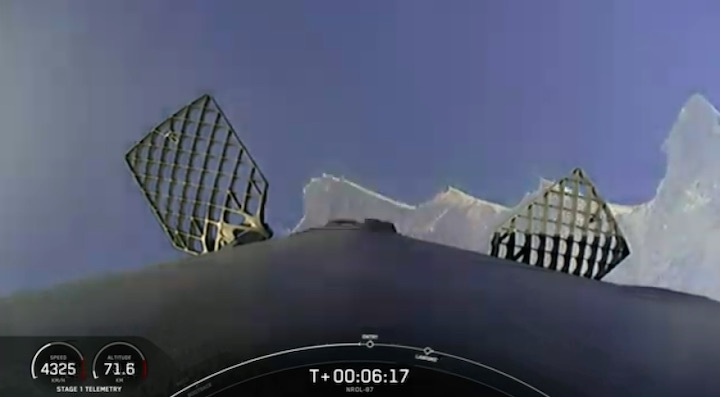
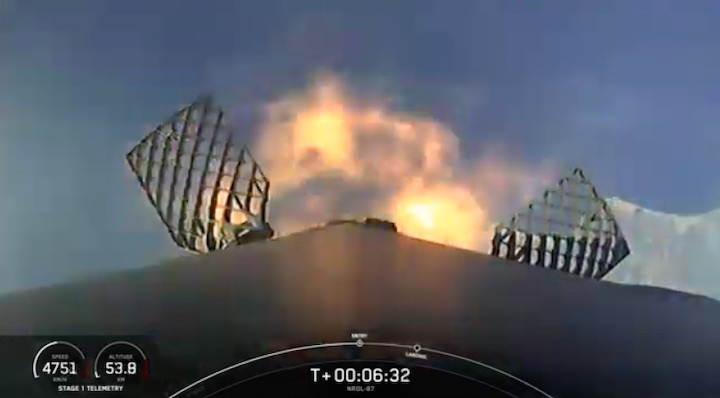
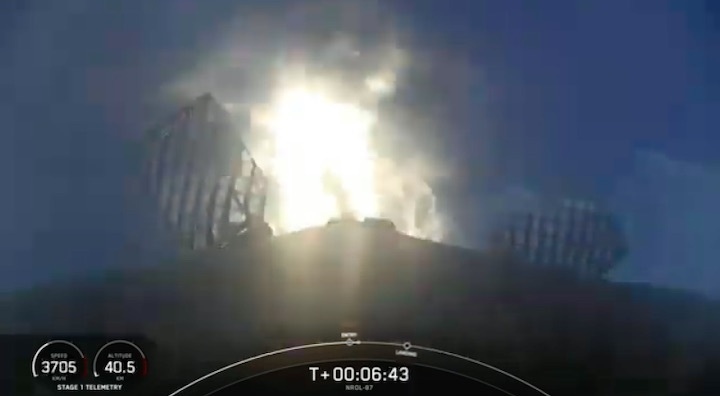
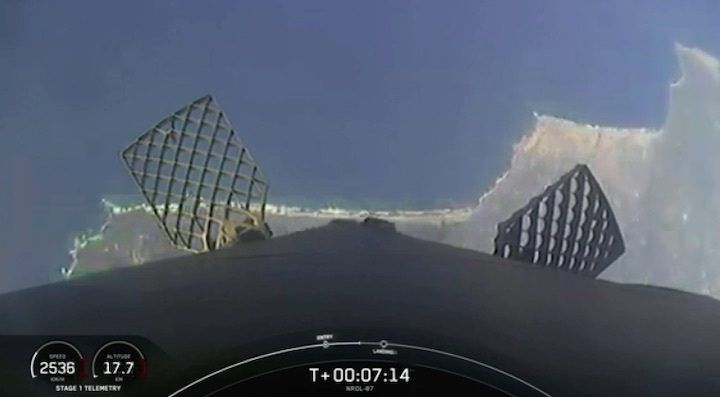


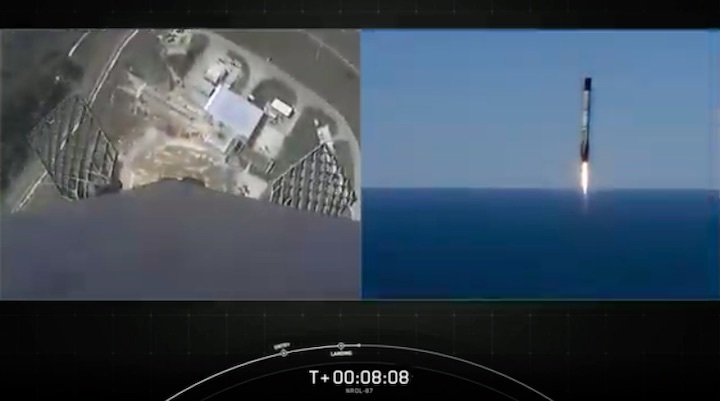
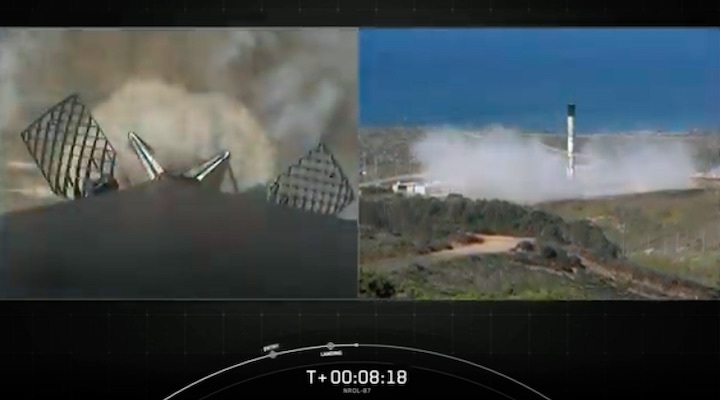
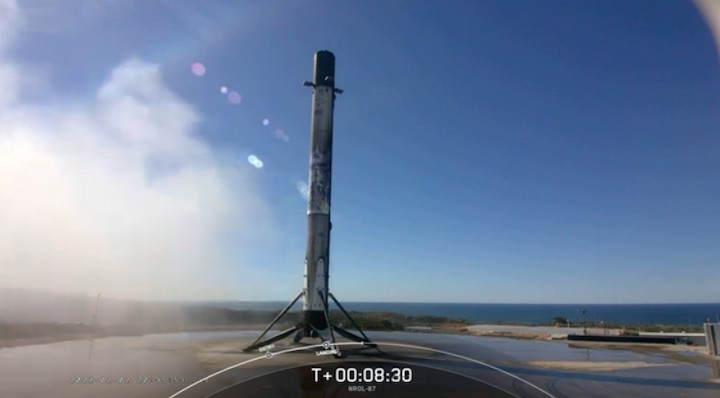
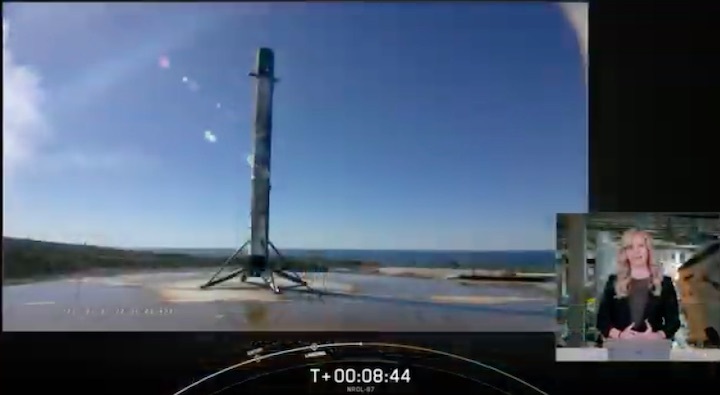
Quelle: SpaceX
